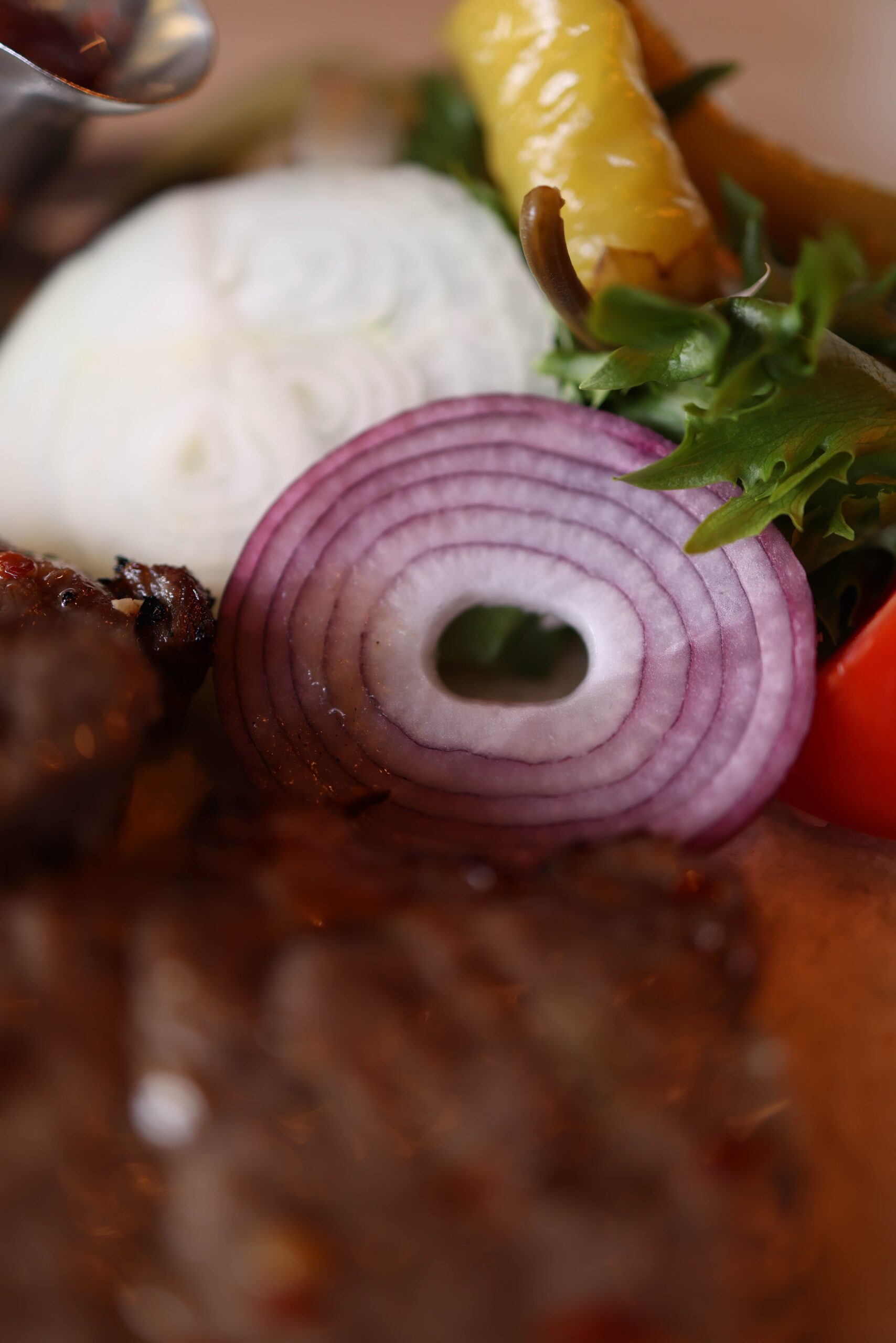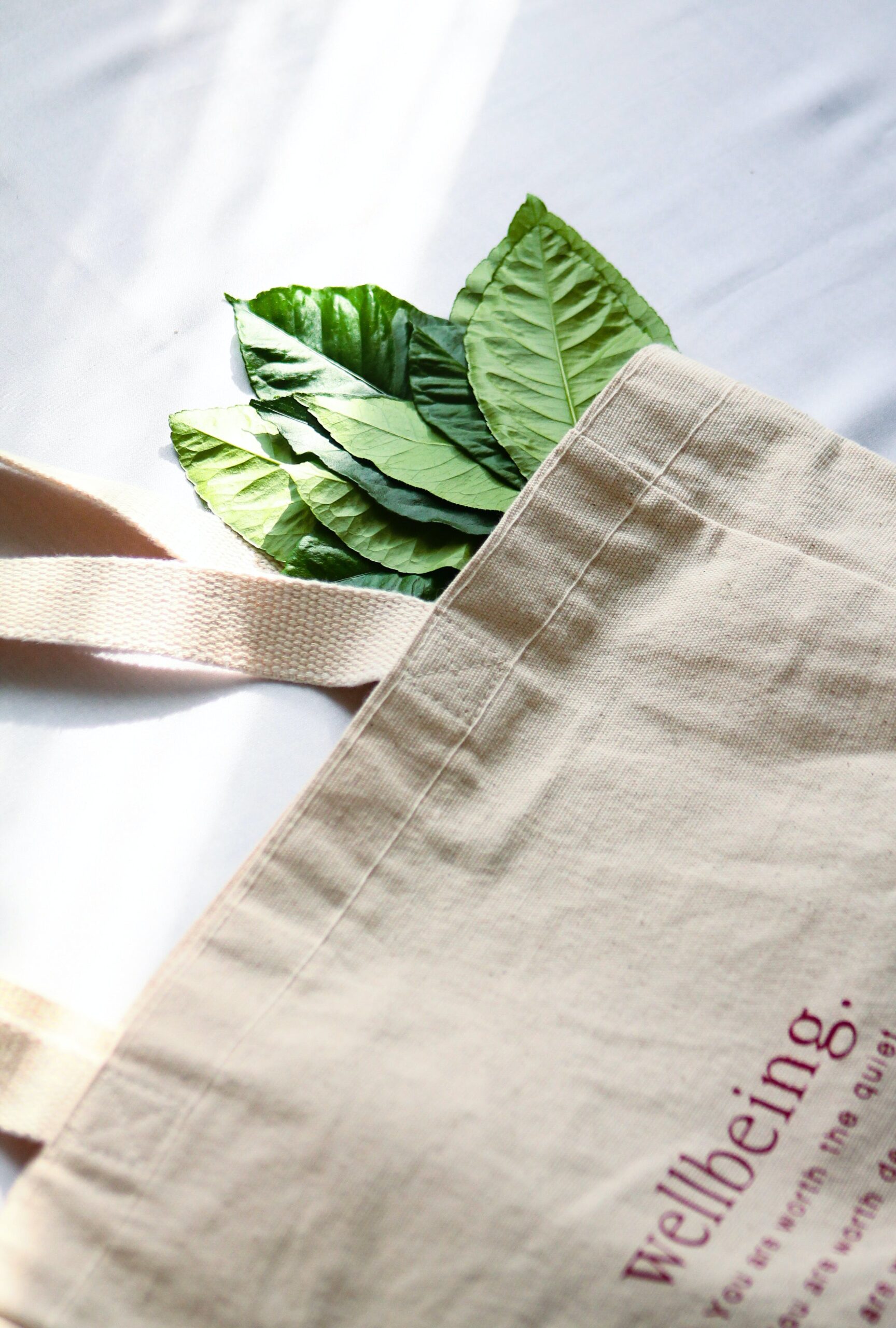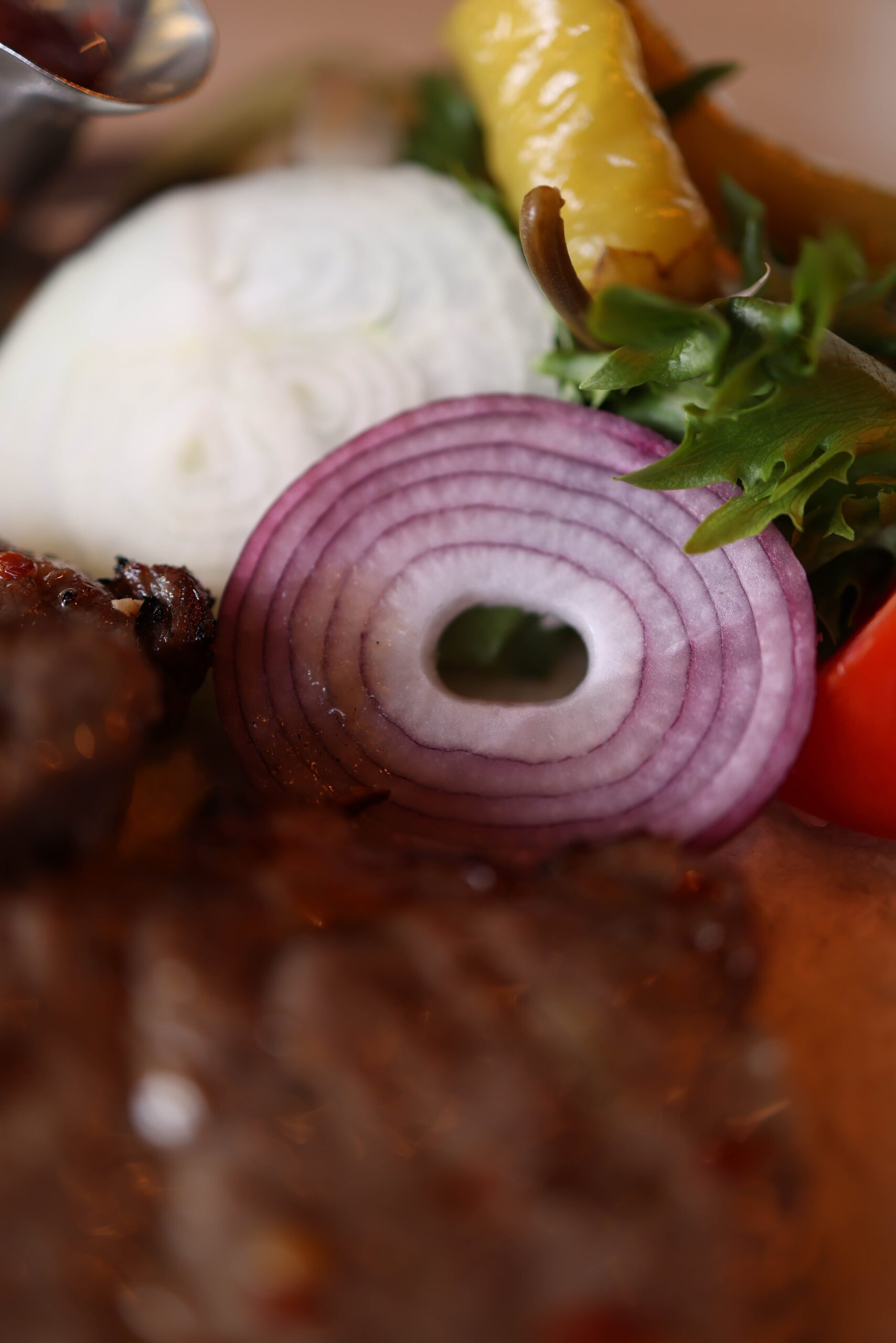Indulge your senses with the tantalizing world of cooking with fresh herbs. At Tastepan.com, we invite you on a flavorful adventure, where every dish becomes a masterpiece. Leave the mundane behind and unlock the potential of your culinary creations by infusing them with the vibrant aromas and distinctive flavors of fresh herbs. With our step-by-step instructions, curated recipes, and expert tips, you’ll discover how these humble ingredients can elevate your dishes to new heights. Whether you’re a seasoned chef or a novice in the kitchen, join us on this tantalizing journey as we explore the limitless possibilities of cooking with fresh herbs.

Benefits of Cooking with Fresh Herbs
Enhanced Flavor
Cooking with fresh herbs can add a whole new level of flavor to your dishes. Unlike dried herbs, which have a more concentrated flavor, fresh herbs have a vibrant and aromatic taste that can elevate any recipe. Whether you’re making a simple salad or a complex sauce, adding fresh herbs can bring a burst of freshness and complexity to your dish. The natural oils and essential compounds found in fresh herbs release their flavors when cooked, enhancing the overall taste of your food.
Aromatic Fragrance
One of the delightful benefits of cooking with fresh herbs is the aromatic fragrance they bring to your kitchen. As soon as you start chopping or crushing fresh herbs, their fragrant oils are released, filling the air with a tantalizing scent. The aroma of fresh herbs not only enhances the sensory experience of cooking but also adds an inviting and appetizing element to your meals. The combination of their fragrance and flavors can make your dishes more enticing and enjoyable.
Nutritional Value
Fresh herbs not only enhance the taste and aroma of your food but also offer a range of nutritional benefits. Many herbs are rich in vitamins, minerals, and antioxidants, which can contribute to a healthy and balanced diet. For example, parsley is packed with vitamin C and vitamin A, while cilantro is a good source of vitamin K and antioxidants. By incorporating fresh herbs into your cooking, you can amp up the nutritional value of your meals without sacrificing taste or flavor.
Choosing and Storing Fresh Herbs
Selecting Fresh Herbs
When choosing fresh herbs, look for vibrant leaves that are free from wilting or discoloration. The herbs should have a fresh and strong aroma, indicating their potency. If possible, opt for organically grown herbs to ensure they are free from pesticides and other harmful chemicals. When buying herbs from the grocery store, check the expiration date and choose herbs that have not lost their freshness. Additionally, consider growing your own herb garden to have a constant supply of fresh herbs at your fingertips.
Storing Fresh Herbs
To keep your fresh herbs fresh for longer, it’s essential to store them properly. For herbs with stems like parsley, cilantro, and thyme, trim the ends and place them in a glass of water (similar to a bouquet of flowers). Cover the herbs loosely with a plastic bag and store them in the refrigerator. You can also wrap fresh herbs in a damp paper towel and store them in a sealed container or plastic bag. This method helps retain their moisture, keeping them fresh for several days. However, it’s best to use fresh herbs as soon as possible to maximize their flavor and potency.

Popular Fresh Herbs in Cooking
Basil
Basil is a versatile herb widely used in Italian, Mediterranean, and Thai cuisines. It has a sweet and slightly peppery flavor that pairs well with tomatoes, garlic, and cheese. Basil is a key ingredient in dishes like pesto, Caprese salad, and Margherita pizza. It can be added to soups, sauces, and even infused into oils for a burst of freshness.
Parsley
Parsley is a staple herb in many dishes and is known for its fresh, grassy flavor. It comes in two varieties: curly leaf and flat-leaf (Italian) parsley. Both varieties add brightness to dishes, but flat-leaf parsley has a stronger flavor. Parsley is often used as a garnish, sprinkled over salads, soups, and roasted vegetables. It can also be used in marinades, sauces, and as an ingredient in tabbouleh.
Cilantro
Cilantro has a distinct flavor that is either loved or hated by many. Its leaves have a refreshing and citrusy taste, while its stems and roots have a stronger, earthier flavor. Cilantro is commonly used in Mexican, Indian, and Southeast Asian cuisines. It adds a vibrant touch to salsas, curries, stir-fries, and guacamole. Cilantro is best added towards the end of cooking to preserve its flavor.
Rosemary
Rosemary is an aromatic herb with a woody fragrance and a pine-like flavor. It pairs well with roasted meats, potatoes, and root vegetables. Rosemary can be used fresh or dried, but the fresh variety offers a more pronounced flavor. It can be chopped and added to marinades, infused into olive oil, or used as a seasoning for roasted chicken or lamb.
Thyme
Thyme is a versatile herb with a subtle, earthy flavor. It complements a wide range of savory dishes and is often used in Mediterranean and French cuisines. Thyme works well with meats, stews, sauces, and roasted vegetables. It can be added to soups and stocks or used to infuse flavor into oils and butters.
Using Fresh Herbs in Different Cuisines
Italian Cuisine
Fresh herbs are a crucial component of Italian cuisine, adding depth and aroma to traditional dishes. Basil, oregano, parsley, and rosemary are commonly used in pasta sauces, pizzas, and bruschetta. They bring a burst of freshness and enhance the flavors of tomatoes, garlic, and olive oil. Additionally, Italian cuisine often utilizes herb-infused oils to elevate the taste of salads, bread, and grilled vegetables.
Asian Cuisine
In Asian cuisine, fresh herbs are used to balance flavors and add complexity to dishes. Cilantro, mint, Thai basil, and lemongrass are frequently used in Thai, Vietnamese, and Indian recipes. These herbs contribute freshness and brightness to curries, stir-fries, spring rolls, and noodle dishes. Thai basil is a key ingredient in Thai cuisine and imparts a distinct anise-like flavor.
Mediterranean Cuisine
Mediterranean cuisine incorporates a variety of fresh herbs to create vibrant and healthy dishes. In addition to the popular herbs mentioned earlier, Mediterranean cuisine frequently utilizes dill, tarragon, and oregano. These herbs enhance the flavors of lamb, fish, eggplant, and tomatoes. The combination of fresh herbs, olive oil, and lemon juice creates refreshing and tangy dressings for salads and marinades.

Tips for Preparing Fresh Herbs
Washing Herbs
Before using fresh herbs, it’s important to wash them thoroughly to remove any dirt, pesticides, or other impurities. Gently rinse the herbs under cool running water and pat them dry with a clean kitchen towel or paper towels. Avoid washing herbs too far in advance, as excessive moisture can cause them to wilt quickly.
Chopping and Mincing
To release the flavors of fresh herbs, they need to be chopped or minced. Start by removing the leaves from the stems and discard any tough stems. Stack the leaves on top of each other, roll them tightly, and slice them thinly to create thin ribbons, or chiffonade. Alternatively, you can finely chop the herbs with a sharp knife. Mincing the herbs will help distribute their flavors more evenly throughout your dish.
Infusing Oils and Vinegars
Infusing oils and vinegars with fresh herbs is an excellent way to extend their shelf life and infuse dishes with their flavors. Start by sterilizing glass bottles or containers to prevent any bacterial growth. Place the fresh herbs in the container and fill it with oil or vinegar, ensuring the herbs are completely submerged. Seal the container and store it in a cool, dark place for several weeks, allowing the flavors to infuse. The infused oils and vinegars can be used in dressings, marinades, or as a dip for bread.
Pairing Fresh Herbs with Different Ingredients
Meat and Poultry
Fresh herbs can elevate the flavors of various meats and poultry. For chicken, rosemary, thyme, and sage are excellent choices. The aromatic notes of rosemary and thyme complement roasted and grilled chicken, while sage pairs well with rich and hearty dishes like roasted turkey or sausage. When cooking red meats like beef or lamb, use robust herbs like oregano, basil, or marjoram for an added depth of flavor.
Seafood
Seafood dishes can benefit from the freshness of herbs, enhancing the delicate flavors. Dill, parsley, and cilantro work particularly well with fish and shellfish. Dill adds a refreshing and slightly tangy note to salmon and trout, while parsley brightens up dishes like scallops, shrimp scampi, and lobster. Cilantro adds a burst of citrusy flavor to ceviche, fish tacos, and Asian-inspired seafood dishes.
Vegetables
Fresh herbs are a wonderful way to enhance the natural flavors of vegetables. Mint and cilantro are excellent choices for salads and roasted vegetables, as they add a refreshing and aromatic touch. Basil pairs well with tomatoes and can be used in dishes like Caprese salad or bruschetta. Dill complements cucumbers and root vegetables, while thyme adds warmth to roasted potatoes and carrots.
Cooking Techniques for Maximizing Fresh Herb Flavors
Simmering
Simmering is a cooking technique that allows the flavors of fresh herbs to infuse into liquids, such as stocks, soups, and sauces. Add whole sprigs of herbs like thyme or rosemary to simmering dishes, and remove them before serving. This method imparts the herb’s flavor without overpowering the dish.
Marinating
Marinating meat, poultry, or vegetables with fresh herbs can add depth and complexity to your dishes. Create a marinade by combining herbs, garlic, citrus juice, and oil. Let the ingredients marinate for a few hours or overnight to infuse the flavors into the food. The herbs will not only add flavor but also help tenderize the meat.
Garnishing
Garnishing your dishes with fresh herbs is a simple yet effective way to add a burst of freshness and visual appeal. Sprinkle chopped herbs over finished dishes, such as soups, salads, pasta, or grilled meats, to give them a vibrant and aromatic touch. The herbs not only enhance the flavors but also make your meals more visually appealing.
Creating Herb-Infused Oils and Butters
Homemade Herb-Infused Oils
Making herb-infused oils at home is a great way to preserve the flavors of fresh herbs and add a unique touch to your cooking. Choose your favorite herbs, such as rosemary, thyme, or basil, and place them in a sterilized glass bottle. Fill the bottle with a neutral oil like olive oil, ensuring the herbs are completely submerged. Seal the bottle and store it in a cool, dark place for a few weeks, shaking it occasionally to allow the flavors to infuse. The infused oils can be used as a finishing touch for salads, pasta, roasted vegetables, or drizzled over grilled meats.
Herb-Infused Butter
Herb-infused butter is a delicious way to enjoy fresh herbs. Soften unsalted butter and mix in finely chopped herbs like parsley, chives, or tarragon. Season with salt and pepper to taste. Roll the flavored butter into a log using plastic wrap and refrigerate until firm. Slice off pieces of the herb-infused butter as needed and use them to enhance the flavors of grilled meats, seafood, vegetables, or to spread on warm crusty bread.
Herb Variations and Substitutions
Common Herb Variations
While the mentioned herbs are popular in cooking, there are many other varieties you can explore to add dimension to your dishes. Some examples include chives, mint, sage, tarragon, and coriander. Each herb brings its own unique flavor profile and can be substituted or combined with the more traditional herbs in various recipes.
Substituting Dried Herbs for Fresh
In situations where fresh herbs are not available, dried herbs can be a suitable alternative. However, it’s important to remember that dried herbs are more concentrated in flavor, so a general rule of thumb is to use one-third of the amount of dried herbs compared to fresh. For example, if a recipe calls for one tablespoon of fresh rosemary, you would use one teaspoon of dried rosemary.
Substituting Fresh Herbs for Dried
If a recipe calls for dried herbs but you prefer to use fresh ones, it’s generally recommended to use three times the amount of fresh herbs compared to dried. For example, if a recipe calls for one teaspoon of dried thyme, you would use three teaspoons (or one tablespoon) of fresh thyme. Adjust the amounts based on personal taste preferences.
Growing Your Own Herb Garden
Selecting the Right Herbs
Growing your own herb garden is a rewarding experience that allows you to have fresh herbs readily available. Start by selecting the herbs you frequently use in your cooking or the ones that appeal to your taste. Consider factors like climate, sunlight, and available space to determine which herbs will thrive in your garden. Some easy-to-grow herbs for beginners include basil, mint, rosemary, and thyme.
Planting and Caring for Herbs
When planting herbs, choose a suitable location with good drainage and adequate sunlight. Most herbs prefer well-draining soil, so adding compost or sand to the planting area can improve drainage. Water the herbs regularly, allowing the soil to dry slightly between watering. Prune the herbs regularly to promote healthy growth and avoid overcrowding. It’s also helpful to research specific care instructions for each herb to ensure optimal growth.
Harvesting and Preserving
Harvesting herbs from your garden is an exciting and rewarding process. As a general rule, you should wait until the plants are well established before harvesting. When harvesting, choose the healthiest leaves or sprigs and pinch them off just above a node or leaf set. Regularly harvesting encourages new growth and helps maintain the shape and health of the plant.
To preserve your freshly harvested herbs, there are several methods you can use. Drying herbs by hanging them upside down in a well-ventilated area is a traditional method. Alternatively, you can freeze herbs by washing and drying them thoroughly, then placing them in an airtight container or freezer bag. Herb-infused oils, vinegars, or butters can also be made using fresh herbs from your garden to extend their shelf life and enjoy the flavors all year round.
In conclusion, cooking with fresh herbs can greatly enhance the taste, aroma, and nutritional value of your meals. Whether you’re exploring different cuisines or experimenting with new recipes, the addition of fresh herbs can elevate your culinary creations to new heights. By selecting and storing fresh herbs properly, understanding their flavor profiles, and utilizing various cooking techniques, you can unlock a world of flavorful possibilities in your own kitchen. So, embark on a flavorful adventure and let fresh herbs take your cooking to the next level!

